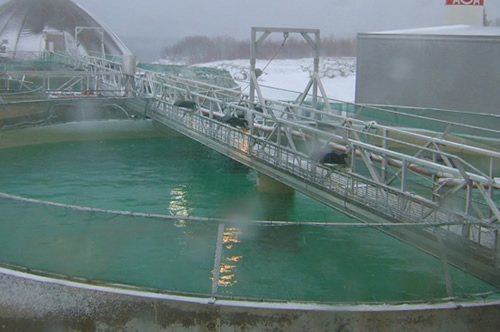AGRU America’s podcast series explores geosynthetic applications and polymeric material advances that beneficially influence the performance of infrastructure. The latest episode finds Cody Miles discussing geosynthetics in aquaculture. (Listen below.)
“Ideally … the majority of the operating costs in an efficient fish farm comes from the feed,” Miles says. “Therefore, using components such as cages or pipe systems that require frequent maintenance can skew the costs and create inefficiencies, ultimately harming the long-term success of the business.”
This is where geosynthetic lining systems and polymeric pipe and pipe protection components come into play. They can provide long-term performance in a wide variety of environmental conditions for which they are specifically engineered.
AGRU IN AQUACULTURE
AGRU has a strong international record in aquaculture applications. Geosynthetica has previously looked at some of the company’s projects in this sector, such as the use of Sure-Grip® concrete protective liner in the harsh environment of Salsbruket, Norway to protect concrete basins in a salmon breeding facility. The material selected was engineered for food-grade installations and provided a low maintenance, long-term, environmentally sound design with strong UV stabilization characteristics.
Aquaculture is a deeply important source for food and for livelihoods. More than 800 million people have incomes tied to fisheries and aquaculture markets and roughly 3 billion people depend upon the ocean for food.
“I think the aquaculture industry will increasingly turn to geosynthetics as the material of choice for solving challenges and creating sustainable operations,” Miles says.
Sustainability is key if our fisheries are to survive.












